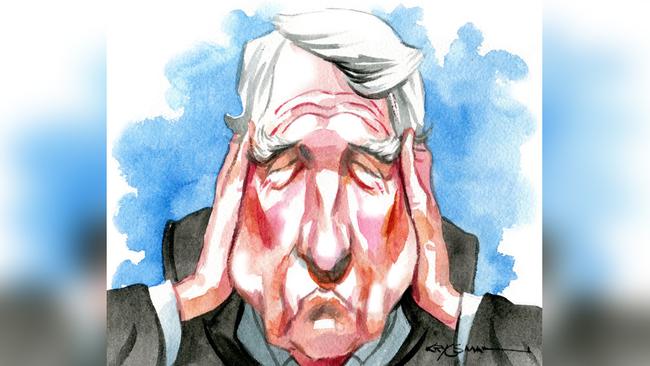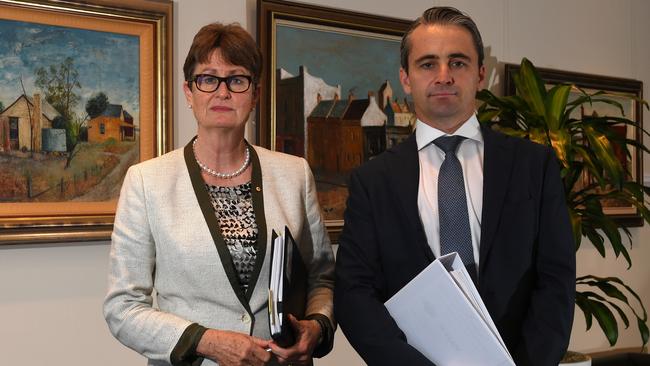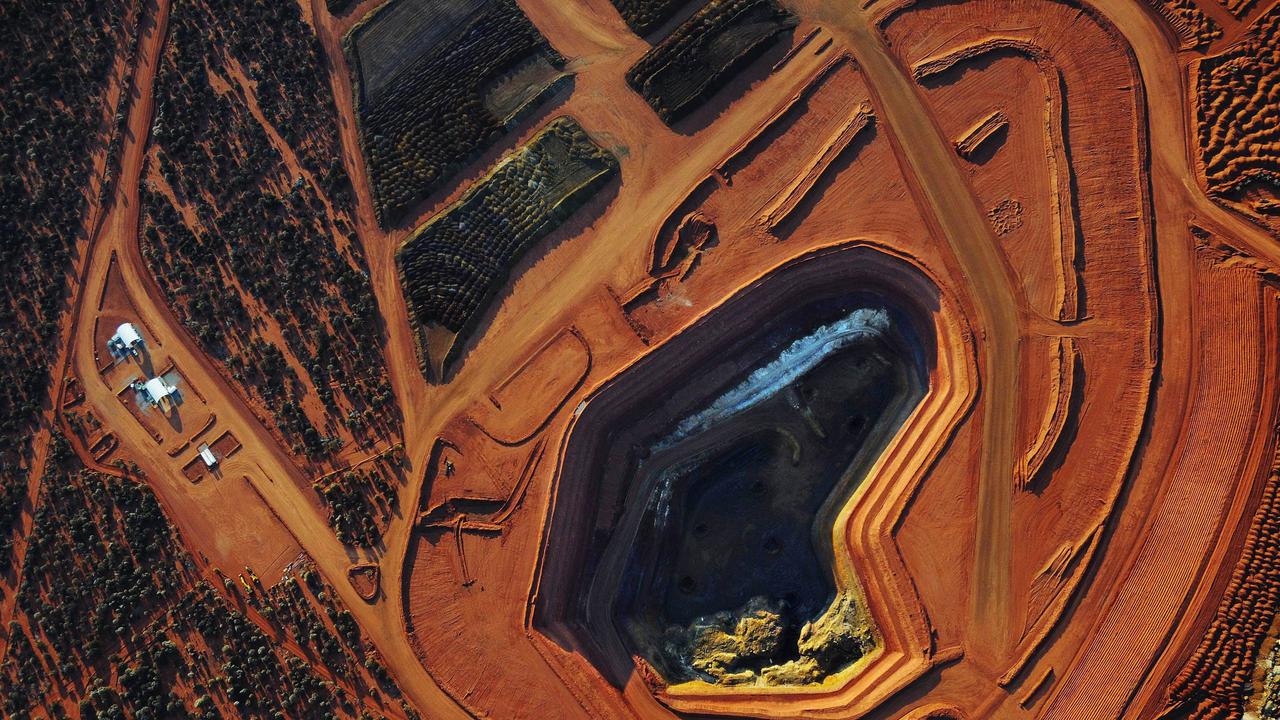CBA: Problems ignored as stellar profits kept flowing in
CBA has become ‘complacent, overconfident and desensitised’ to its failings with customers.

After one of the most benign decades in Australian banking history, the country’s biggest company, CBA, has become “complacent, overconfident and desensitised” to its failings with customers.
That is the conclusion of John Laker’s committee’s review of the bank’s governance and culture, which should serve as a blueprint for corporate Australia on how best to run their operations.
A string of financial disasters dating back to the GFC and Storm Financial, CommInsure, dodgy financial planners, the bank bill swap rate and Austrac were the results of a lack of oversight of the bank’s risk and customer operation and a lack of accountability causing hundreds of millions of dollars in financial hardship and personal grief.
But at the same time the bank reported returns on equity of more than 18 per cent, so no one from chair David Turner down asked too many questions. The good news travelled up fast but the bad news stayed at shop floor level.
The market treated the $1 billion or 2 per cent capital “fine” imposed by APRA in the wake of the report as the joke it was.
Bank stocks rallied in the wake of the non-action and a tepid rise in profits to $3.5bn for ANZ on good cost control but zero revenue growth. The undertaking was a non-event but the impact of the report loomed far larger in its damning assessment of CBA arrogance.
It of course is not the only bank to fall victim to hubris, which is where the report comes into its own.
ANZ’s Shayne Elliott has taken the lead among the big four banks in recognising the need for change and on Tuesday admitted the royal commission would dampen revenue growth for the sector from around 7 per cent a year to at best 2 per cent.
With 16 per cent market share Elliott hopes to grow his revenues by taking market share from the big two banks, with his new “agile” management structure being rolled out to 13,000 or 30 per cent of staff by November.
The new smaller teams are aimed at getting closer to customers and delivering faster messages and better products.
The ANZ result was boosted by a fall in bad and doubtful debt charges to $408m, or 14 basis points, the lowest since 2006 and the second lowest in history.
In short, with housing growth slowing and business lending still weak, the sector is soft.
The Laker review concluded CBA had failed to ask the right questions.
In their book The Ethical Kaleidoscope, academics Douglas Long from UNSW and Zivit Inbar from Deakin stress that many companies focus too much on the letter of the law instead of asking “is this the right thing to do?”.
It’s a crucial difference, judging by the evidence on display the royal commission.
The Laker report advised: “CBA needs to translate financial strength and good intent into better meeting community needs and the standards expected of a systemically important bank in Australia.”
Scott Morrison was right on Tuesday to implore the rest of corporate Australia to take note of the Laker findings.
Yet symptomatic of the cultural overhaul necessary at CBA was a common insider’s response: that that the report was “fair but focused on our biggest weaknesses, so what could you expect”.

The official responses from new chair Catherine Livingstone and chief Matt Comyn were considerably more diplomatic and encouraging about the chance of change.
An obvious question is, given John Laker used to run APRA, where was he and where were his questions when this was going on, to which the insider response from APRA is: “We don’t run the bank.”
The Laker report cost about $15m which is one quarter of its $60m annual budget for bank supervision, so clearly it was a special and necessary effort.
The question remains.
The report doesn’t name names but praises the recent efforts of Livingstone and damns that of her predecessor David Turner and the former heads of audit and risk committees, Brian Long and Harrison Young.
Former chief Ian Narev’s “optimistic” team ran rings around the board and were rarely challenged thanks to their “propensity for positive … messaging”.
In short, the bank was making record profits and at one stage was heading towards a record $10 billion profit with world-leading returns on equity, so no one needed to worry.
Within the leadership team, a collaborative approach was stressed and academic discussion and speed were seen as more important than asking questions and challenging colleagues.
The report underlines the risk Livingstone is taking with appointing Comyn as the new chief executive. Comyn has read the tea leaves and already preached the new sermon based on the report, while also confiding to the board that it should pay him the $2.2m potentially due on his short term bonus.
His $4.1m long-term bonus is up in the air but his $2.2m salary is safe.
Comyn was a key part of the damned leadership team and responsible for half the profits, so he knows better than most where the problems lie and how to fix them — so long as he is not caught up in the myriad of inquiries inflicted on the sector, which accounts for one-third of the stockmarket’s total valuation.
If a new leader wanted a blueprint for cultural change, the royal commission’s theatrical presentation of material stuck previously in the bowels of slow-moving financial regulators, the Productivity Commission treatise on bank competition and the Laker Committee provide more than enough evidence for change.
Elliott confided on Tuesday that banking is actually competitive compared to many sectors in Australia with four major banks compared to just two elsewhere.
He had a point but these inquiries show you what can go wrong — and let’s face it, plenty has at Commonwealth Bank.
Comyn has presided over the departure of a string of key executives, opening the door for significant change. How many times did you hear Narev talk up the Commonwealth’s market-leading customer satisfaction rankings, yet a string of scandals from CommInsure to wealth management showed that good news travelled fast to the board but bad news didn’t leave the shop floor?
Management didn’t challenge each other.
Austrac’s problems with the bank featured in three separate “red” audit reports in 2013, 2015 and 2016 yet in 2017 the bank feigned horror that the regulator would take it court.
Despite clear warnings dating back at least four years no one at board or senior management level bothered to follow through to make sure the anti-money-laundering issue was fixed.
If you provided the means by which crooks could launder money, what did it matter when your return on equity was over 18 per cent?
The report described CBA’s attitude to regulators as “slow, legalistic, reactive and at times dismissive”.
The report stopped short of accusing it of lying to ASIC like the AMP but it’s not far short of that gutter-level entry.
Remuneration was another failing with reductions in pay “extremely rare” as evidenced by the “relatively modest” adjustment to the CEO’s pay in the wake of the CommInsure scandal.




To join the conversation, please log in. Don't have an account? Register
Join the conversation, you are commenting as Logout